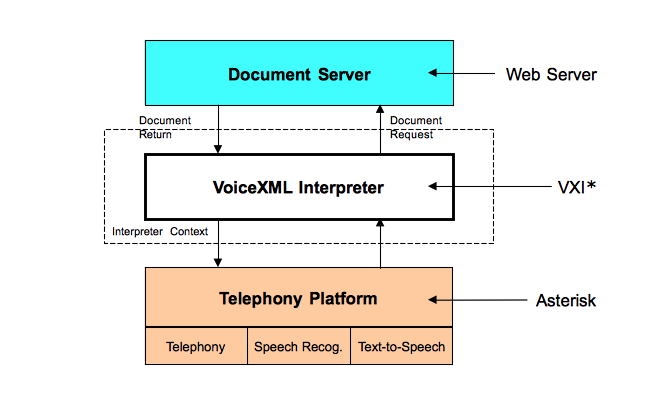VoiceXML Introduction
VoiceXML (VXML) is a Extended Markup Language (XML) that bring Web-base application and content delivery to interactive voice response application content delivery to interactive voice response applications.
History
AT&T Corporation, IBM, Lucent, and Motorola formed the VoiceXML Forum in March 1999, in order to develop a standard markup language for specifying voice dialogs.Usage
VoiceXML applications are commonly used in many industries and segments of commerce. These applications include order inquiry, package tracking, driving directions, emergency notification, wake-up, flight tracking, voice access to email, customer relationship management, prescription refilling, audio news magazines, voice dialing, real-estate information and national directory assistance applications.VoiceXML applications
- Voice portals: Just like Web portals, voice portals can be used to provide personalized services to access information like stock quotes, weather, restaurant listings, news, etc.
- Location-based services: You can receive targeted information specific to the location you are dialing from. Applications use the telephone number you are dialing from.
- Voice alerts (such as for advertising): VoiceXML can be used to send targeted alerts to a user. The user would sign up to receive special alerts informing him of upcoming events.
- Commerce: VoiceXML can be used to implement applications that allow users to purchase over the phone. Because voice gives you less information than graphics, specific products that don't need a lot of description (such as tickets CDs, office supplies, etc) work well.
- CTI: VoiceXML can identify and qualify a user before transfering it to a queue. Depending on the CTI integration method, the VoiceXML can push a context to the agent form associated to the user's interactions.
- Auto Attendent: VoiceXML can replace an operator to redirect calls. It can use the Automoatic Speech Recognition to recognize a user's name from a contact list and transfer the call to the associated extension.
Example of a VoiceXML
<vxml version="2.0" xmlns="http://www.w3.org/2001/vxml">
<form>
<block>
<prompt>
Hello world!
</prompt>
</block>
</form>
</vxml>

Comments
Post a Comment